Review for Seraph Of The End: Series 1 Part 1
Introduction
I always felt uncomfortable with big mainstream studios dealing anime. The few times I have seen anime under the aegis of companies like Warners and Sony it’s obvious that they use the same process as for the rest of their output, a product aimed at the mainstream. Over many long years of customer feedback, the dedicated anime distributors have found the best way to deliver what fans expect, when it comes to basics like chaptering, subtitling, localisation and so on. Remember that anime fans are the kind of people who will import if there is a logo in the wrong place on the packaging. The big distributors are about mass production and quick sales before moving on to the next thing. They’re not so bothered when it comes to details when it comes to niche products like anime. So when Universal announced that they were getting into the UK anime market, I was wary to say the least.
Sure enough, Universal’s stay turned out to be a short one, as they only released the first seasons of My Hero Academia, and the Heroic Legend of Arslan, as well as Seraph of the End and Drifters. You might note that these are all Funimation titles in the US, and for a while Funimation titles were distributed through Universal there. Being bought out by Sony changed that, but I would guess that there were other reasons why Universal stopped with Drifters. For one thing, they went for the Collector’s boxsets exclusively. These anime shows came in weighty, chipboard cases, packed with physical extras, ranging from very useful artbooks, to pretty useless tat. It seemed an ‘everything but the kitchen sink’ approach to marketing, that whacked the prices up (although nowhere near as high as similar sets from Manga, MVM or All the Anime), and alienated those fans who just wanted the shows in standard edition form, without the fripperies.
It was an approach that was a big hit with My Hero Academia, but less so with the other Universal releases, so much so that while the former may be sold out now, replaced by the Manga standard edition, you can still find the other Universal releases for sale. Sale is right, as when it came down to it, and inspired by MVM’s release of Arslan Season 2, I eventually picked up Season 1 of Arslan, and Seraph of the End, four boxsets in total for less than £10 each. However, while I can take or leave the eclectic physical extras, it turns out that there might indeed be a reason to regret Universal’s apparent departure from the UK anime scene.
The world ended! The Apocalypse virus came and wiped out the human race in the blink of an eye, leaving just the children under thirteen alive. Luckily for them, the vampires rose from the depths of the world to take care of them, raising them and keeping them safe, in exchange for a little ‘payment. Yuichiro and Mikaela along with their ‘siblings’ were rescued from the Hyakuya orphanage. Four years later, Yuichiro is tired of being livestock bred for blood, and annoyed at Mikaela ‘collaborating’ with the enemy. But Mikaela has a plan for their family to escape to the surface world. It’s a plan that fails when Lord Ferid Bathory has arranged for the escape so he can play with his food. Only Yuichiro survives to escape.
He makes it to the world outside to learn that he has been lied to. While humanity was more than decimated by the Apocalypse virus, they aren’t extinct. There’s a walled city where civilisation survives, and where the Japanese Imperial Demon Army trains to destroy the vampires and their monsters once and for all. Yuichiro’s escape was prophesied, and Lieutenant Colonel Guren Ichinose is waiting to recruit him. Yuichiro wants to volunteer straight away to start exterminating vampires, but first he’ll have to go to school. What he doesn’t know is that not all of his family were killed that fateful night.
The first twelve episodes of Seraph of the End are presented across two discs from Universal.
Disc 1
1. The World of Blood Legacy
2. Humanity After the Fall
3. The Demon in Your Heart
4. Vampire Mikaela
5. Black Demon’s Contract
6. New Family
Disc 2
7. Mitsuba’s Squad
8. First Extermination
9. Vampire Attack
10. Results of the Choice
11. Reunion of Childhood Friends
12. Everyone’s a Sinner
Picture
Seraph of the End gets a 1.78:1 widescreen 1080p transfer on these discs. The image is clear and sharp, colours are strong and consistent, and detail levels are excellent. There is no sign of compression, certainly no aliasing, and absolutely no banding. I am so used to some degree of banding on Blu-ray anime releases, especially those from Funimation who released this in the US, that I spend a good few minutes in each episode up close to the screen to see if I can spot any, and I haven’t been able to yet. Visually, this release is on a par with the best Aniplex US discs. It’s a good thing too, as Seraph of the End is a show with strong production values, theatrical quality animation, rich and atmospheric backgrounds, and memorable character designs. These episodes do feel really quite filmic in quality. Although there are moments, especially in episode 10, where the animators resort to the usual pan over static scenes to shortcut frenetic battle sequences that might break the budget or overrun a schedule otherwise.
Sound
Welcome to Europe! Small distributers have shallow pockets, and tend to go for the bare minimum required for the territories they distribute in. It’s rare for a company like Sentai or Funimation to include Spanish language assets in a territory where there is a large Hispanic demographic, instead sticking to the usual English and Japanese. Universal on the other hand have the resources and the reach to cater for a wider audience in more than one country. They source the Funimation dub as well as the original Japanese audio for Seraph of the End, but they also include French and German audio as well. You have DTS-HD MA 5.1 English, and the rest of the language options are DTS-HD MA 2.0 Stereo. You also have English, Dutch, French, and German subtitles and signs where necessary, and none of this is locked during playback. You’re free to choose and mix.
I was happy with the Japanese audio with subtitles, and Universal use a thick, bold subtitle font that is easy to read. There are no typos and everything is accurately timed, but there are no translated lyrics with the episode credit sequences. The actors are suited well to their characters. The action comes across well, and the music drives the emotion of the story as expected. The theme songs for the show are also quite effective.
Extras
Given all that is advertised with this release, I thought the box would be bigger, rivalling my NISA Collector’s Editions, but instead you get a top-loading chipboard box with some very nice artwork that will slot in happily on a BD shelf alongside your Amaray cases. The Seraph box is wider of course, and it comes with a blurb sheet you can peel off and store.
You get a small, folded poster, four playing card sized character info cards, four large art cards, and most significantly, a 129 page artbook in landscape format, with character art and guides, interviews with the animation staff, and a look at the background art and more.
The two Blu-ray discs are presented in a landscape digibook.
Insert the discs and you have a choice of English, German, French, and Dutch menus. Universal use their typical icons for the animated menu, no text here.
Disc 1 has two trailers for the show running to 3:42.
There is 1:32 worth of TV Spots.
The Music Clips are actually the textless credit sequences for the show.
Disc 2 has the Seraph of the Endless comedy shorts, which re-imagine some scenes from the anime with a more humorous bent. These last 18:49.
Conclusion
Seraph of the End is a quality show with a well written story, engaging characters and a lively pace that is very easy to enjoy. It’s also just a bit cynical, as it seems to me that Studio Wit just took their biggest title, Attack on Titan, and just changed the Titans into vampires. It has a similar story set-up and similar character dynamics, although you do get a whole lot more personality and back-story with the vampires than you do with the Titans. It might be better to watch Seraph of the End if you haven’t seen Attack on Titan.
It’s a show about lies and conspiracies; always interesting and dramatic stuff. It begins with the end of the world; adults just drop dead, leaving the children to survive, and the vampires rise to rescue the children and take them to safety, to their subterranean city. The show focuses on the survivors of the Hyakuya orphanage, who four years after the Apocalypse virus, are told that everyone else on the surface has died, that they and the other children are the last humans alive, and they should be grateful to the vampires for saving them. In reality they are livestock, there to be fed upon, and they are treated as animals to be used and abused. And there are some among the vampire nobility that like to play with their food. So when Yu convinced Mikaela that the Hyakusa survivors should escape and take their chance with the virus on the surface, they are just playing into the hands of Lord Ferid. He wants to kill his cows, not just farm them, and it’s through sheer luck and through Mika’s sacrifice that Yu survives to escape to the surface.
When he’s met by Lieutenant Colonel Guren Ichinose of the Japanese Imperial Demon Army, the vampires’ lie is revealed. Not all of humanity was destroyed by the virus, only most of it. The survivors have regrouped in a walled city and are building their strength to wipe out the vampires and the other demonic monsters that arrived with them. Yu’s escape was actually prophesied, and Guren takes Yu at his word when he says that he wants revenge for his murdered ‘family’ and that he will kill all vampires. Then he sends him to school for the next four years, what to all intents and purposes looks like a normal high school, although Yu has a minder in Shinoa Hiragi to keep an eye on him, to make sure he reintegrates into society, makes friends, learns to be human again. It’s only when a vampire escapes from a research facility, and Yu chooses to protect his classmates that he is deemed to have the right stuff to be a vampire fighter as part of the Demon Army.
He’s then introduced to the reality of fighting vampires, that it’s not just something he can do with an everyday sword or a stake through the heart. The members of the Demon Army, particularly those of Guren’s Vampire Extermination Unit, have to make contracts with demons to allow them to manifest the weapons, call forth the power to fight vampires, particularly the vampire nobility that are a cut above the rest. And so Yu’s real training begins, as we get to know the squad of rookies that he’ll be fighting alongside, and their own particular reasons for fighting.
At the same time, it transpires that Mika didn’t die on that day, that instead he was turned into a vampire himself, and his new ‘kin’ have been feeding him a line about how evil the human survivors on the surface are, how they will only use Yu for their purposes. Mika’s become as lethal as any of the vampire nobility, although he’s not one for preying on humans (he drinks his blood from another source), and he’s as determined about rescuing Yu from the evil humans as Yu is about exterminating all vampires.
Naturally there is going to be an unhappy reunion at some point, but it also comes with the kind of revelation about Yu that equates to Eren’s little problem in Attack on Titan. It turns out that the vampires weren’t wholly lying to Mika when they said that the humans were up to something, but the series leaves its biggest revelation for the midpoint, a nice note to end the collection on, leaving you tantalised for Part 2.
So Seraph of the End is an impressive offering from Universal. The collection may be a little bit eclectic when it comes to physical extras, but you can’t discount the quality of the presentation. The show too is very well presented; were these the Funimation discs, you could expect a whole heap of digital banding, and you might have some questions about the brightness, but Universal’s presentation is as impressive as any Aniplex disc I have seen. The show is very entertaining too, a well-written and engaging story, solidly paced, with an interesting cast of characters, and a nice balance of action, drama, and the odd moment of light comedy, and there are more than enough twists and revelations to keep you guessing. I only wish that I hadn’t seen Attack on Titan first, as the similarities are undeniable.
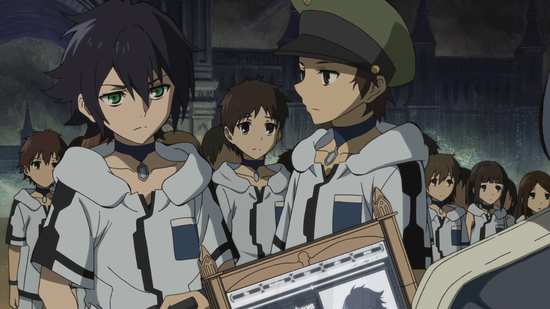
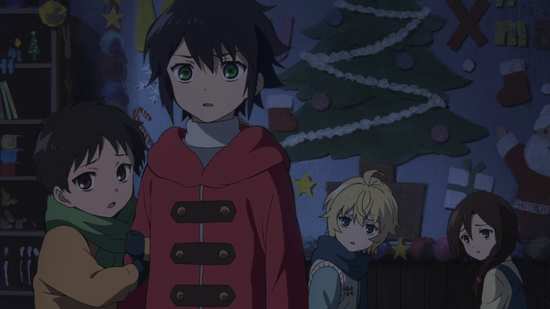
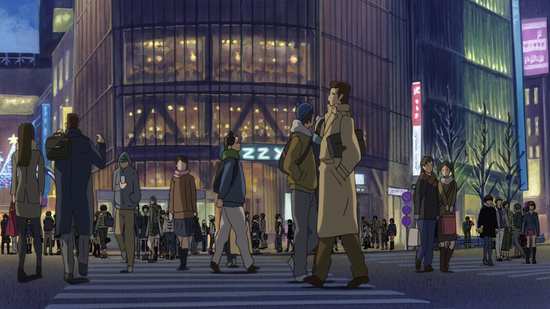
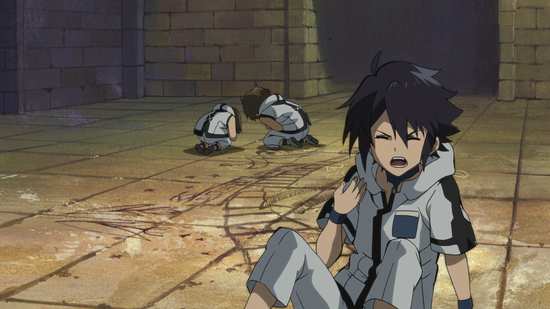
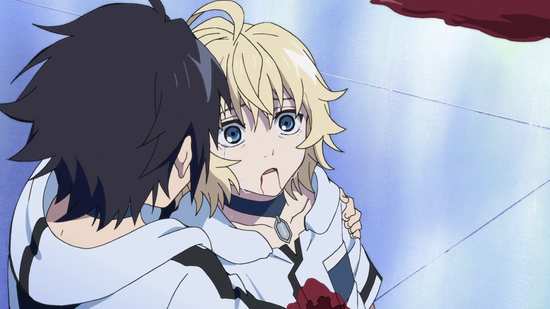

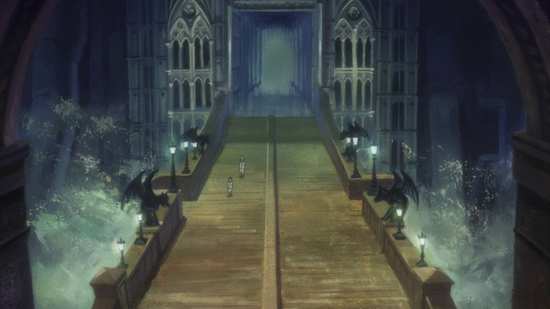
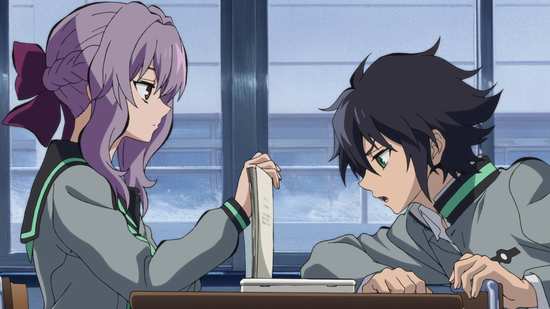

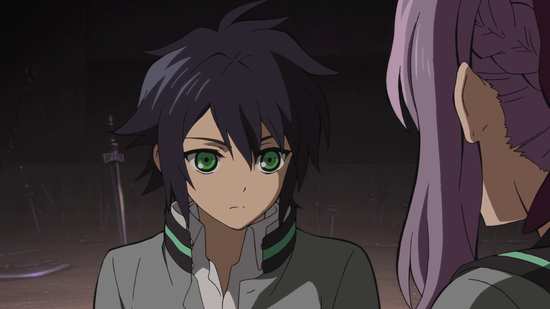
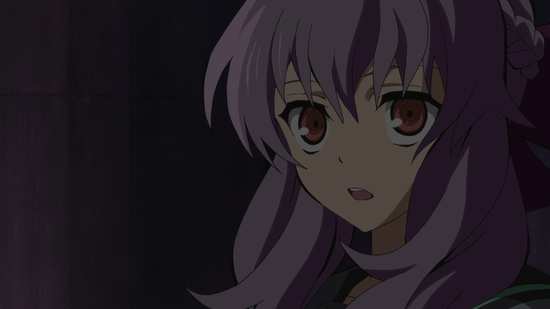
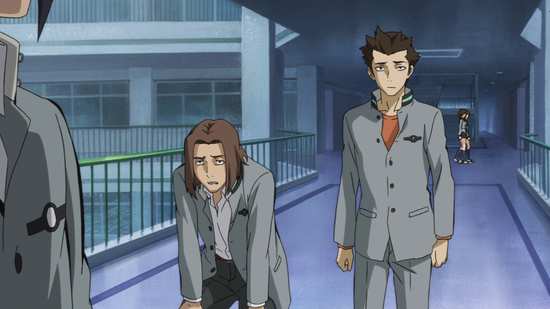
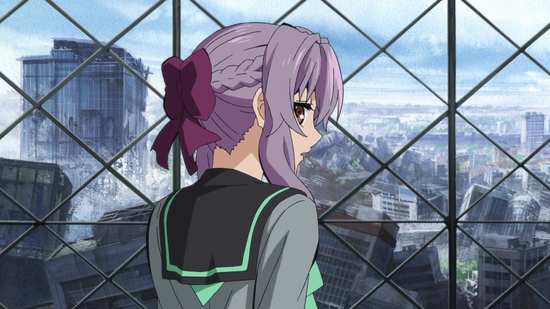
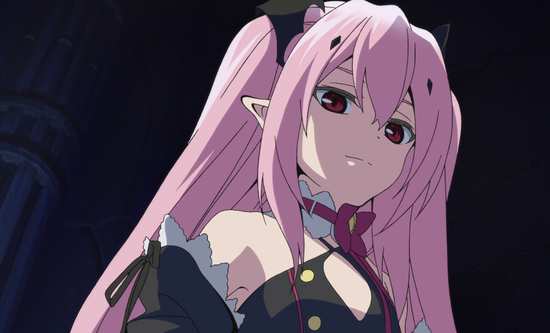
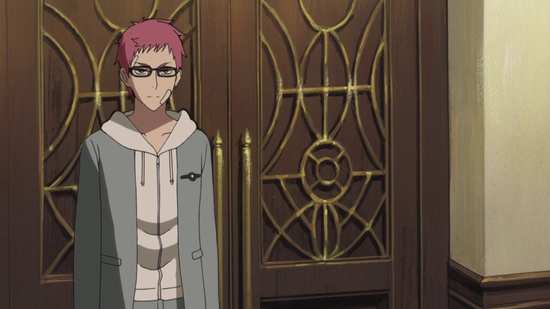
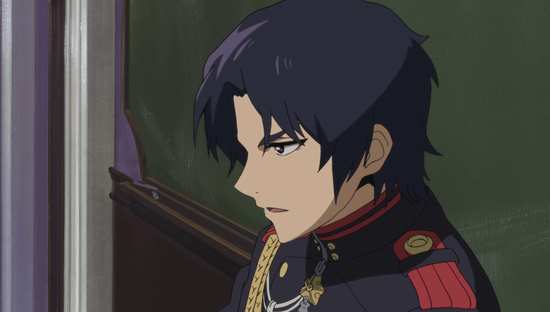

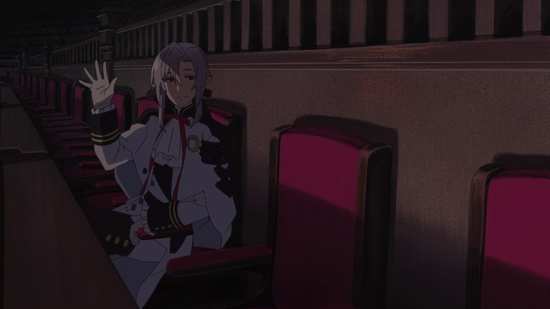
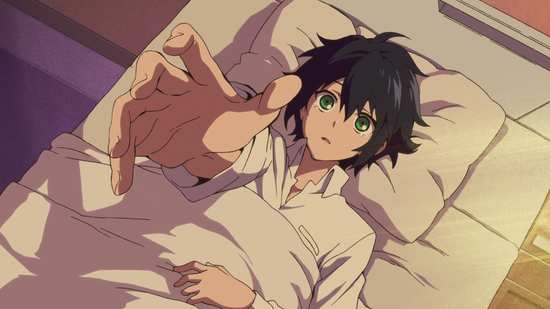
Your Opinions and Comments
Be the first to post a comment!